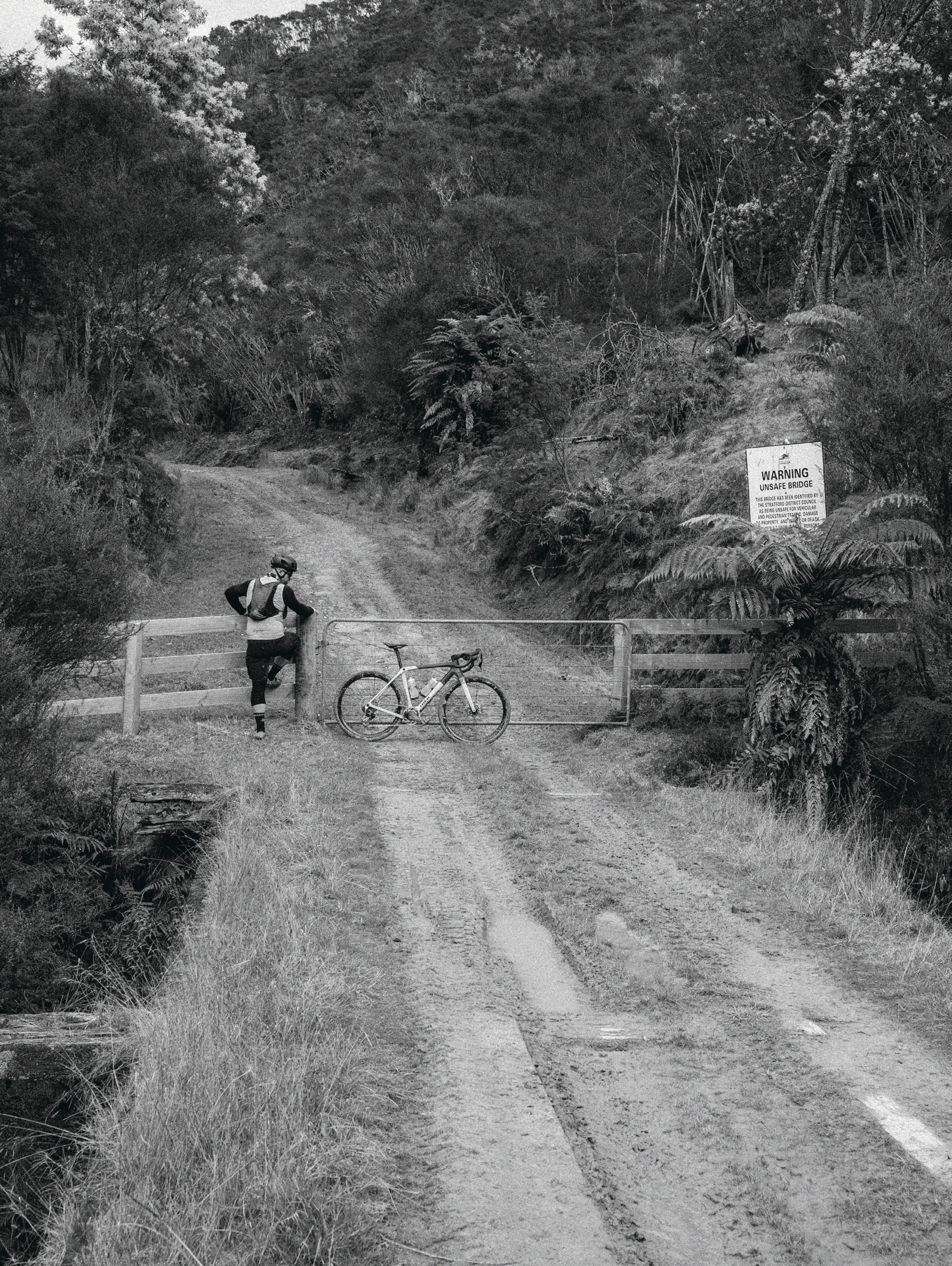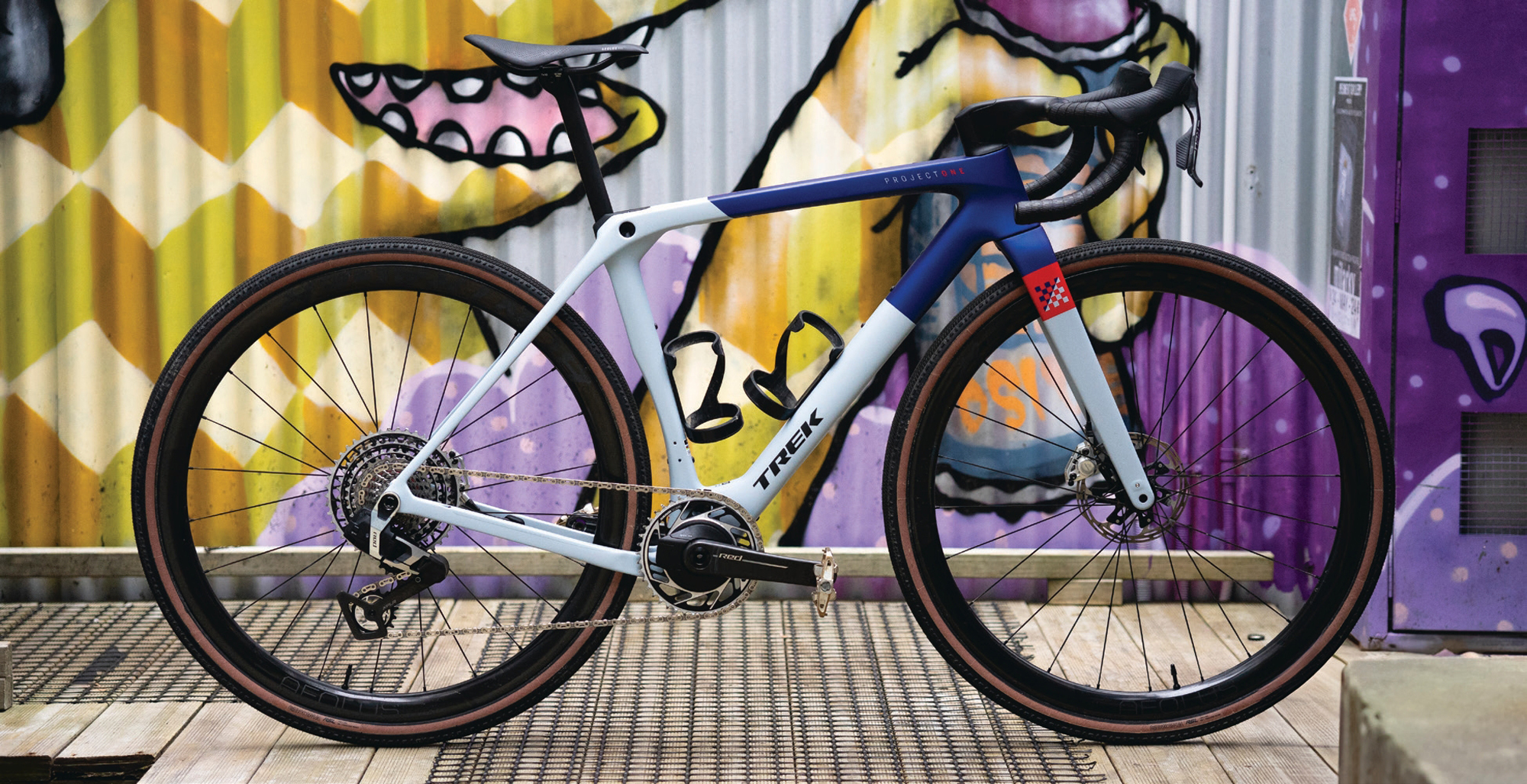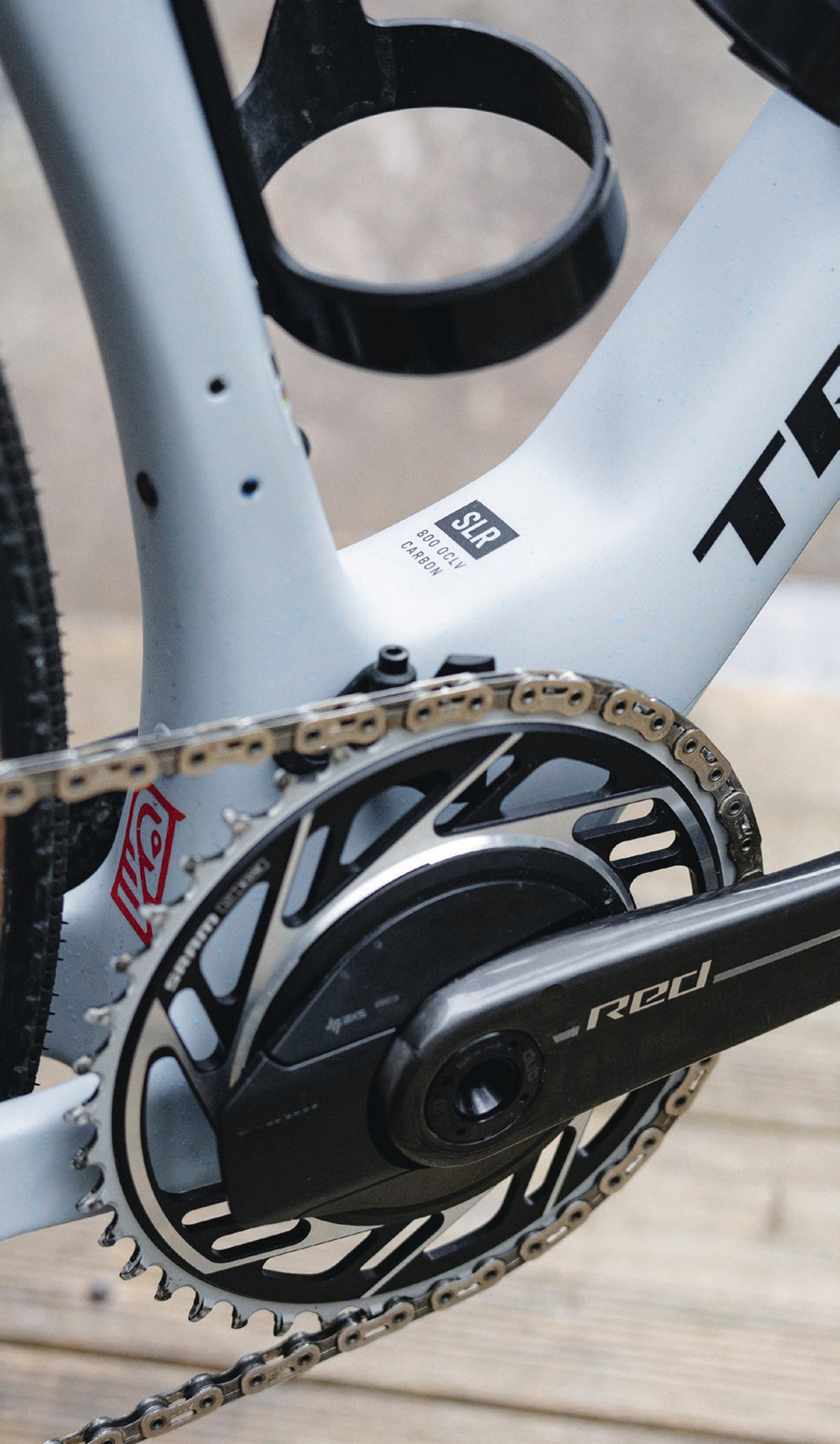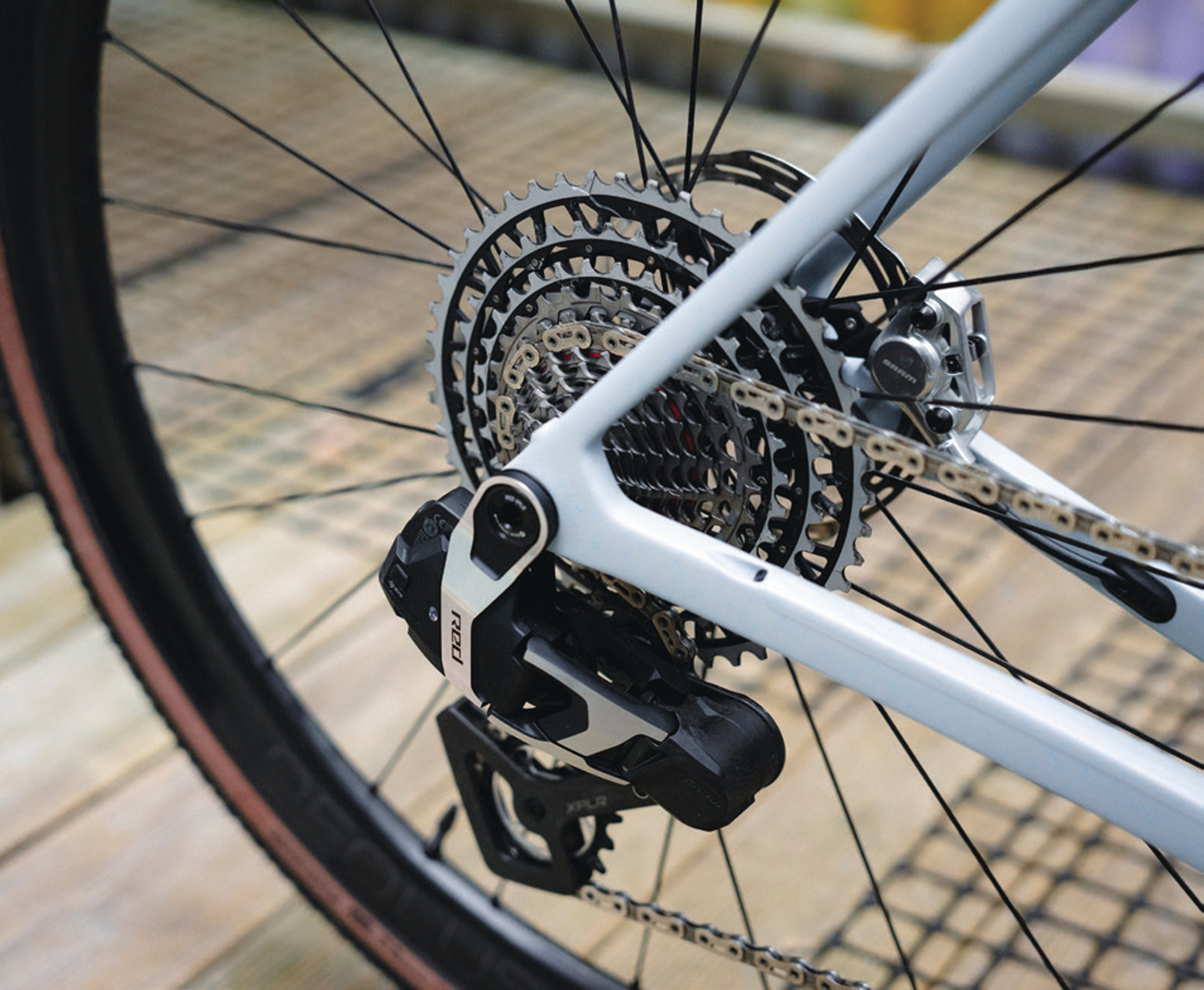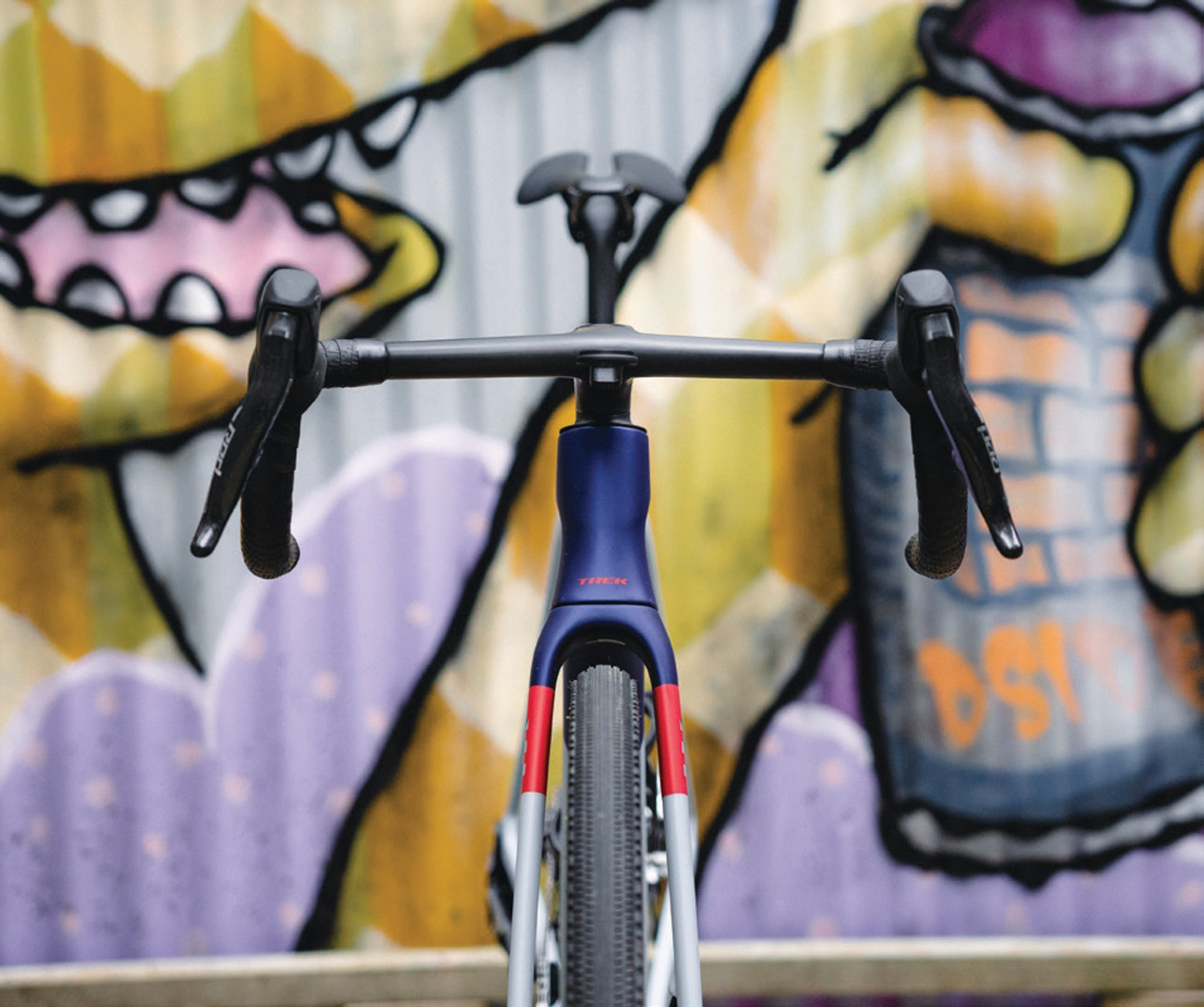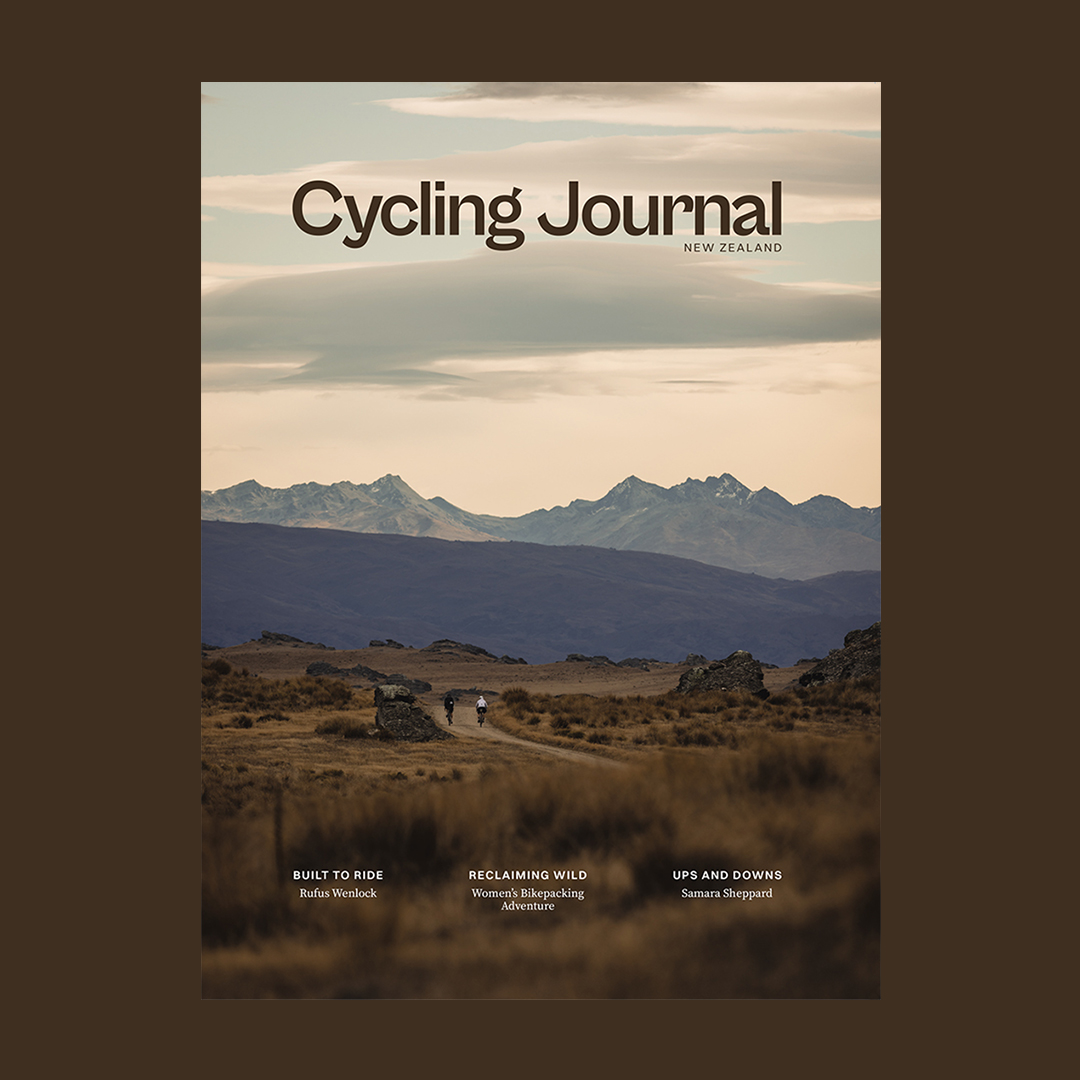Words Liam Friary
Images Jakob Lester
RRP $18,999
Distributor Trek New Zealand
The gravel cycling scene has undergone a monumental shift in recent years, transforming from a niche subset of cycling into a diverse and rapidly growing category. As the popularity of gravel riding has surged, the sport has naturally evolved and expanded, leading to increased segmentation within the market.
This evolution can be attributed to several factors. Firstly, the rise of gravel-specific events and races has created a demand for specialised equipment. These events range from short, intense races and all-day endurance ventures to multi-day ultra-endurance challenges, each requiring different bike characteristics.
Secondly, riders themselves have become more discerning, seeking bikes that cater to their specific riding styles and local terrain. Some prefer bikes that lean towards road bike efficiency for smoother gravel and tarmac sections, while others demand more off-road capability for tackling technical singletrack and rougher terrain.
The popularity of gravel races has been a driving force behind this segmentation. These events often feature a mix of surfaces, from sealed, gravel and dirt roads to challenging sections, all ridden at high speeds. This has created a clear demand for gravel race bikes that can maintain a high pace on rough terrain without sacrificing power, comfort or control.
As a result, manufacturers have responded by developing an increasing plethora of gravel bikes. We’re now seeing a broad spectrum of designs, from lightweight ‘gravel race’ bikes optimised for speed and efficiency, to more robust ‘adventure gravel’ bikes built for stability and comfort over long distances. And that’s barely touching the surface of the gravel segment.
The Trek Checkmate makes its racing intentions loud and clear. It blends Trek’s top-tier road race bike, Madone Gen 8, with their adventure bike, the Checkpoint SLR, to land in the middle of the two – ‘race-gravel’. It’s Trek’s lightest gravel bike to date, making use of the premium 800 Series OCLV Carbon which uses ‘Full System Foil’ aerodynamic tube shapes, said to deliver a fast and efficient ride. All said and done, Trek claims that the Checkmate SLR is a whopping 5 minutes and 54 seconds faster than the Checkpoint SLR on the 200-mile Unbound gravel course, assuming a constant power output of 200W.
These savings are somewhat down to the geometry, which puts the rider in a better, aerodynamic, more efficient position. Like most race bikes, that means a low stack. In my frame size (medium), the Checkmate’s stack is two centimetres lower than that of a medium Gen 3 Checkpoint. Helping with the aero position is the new lightweight and aero one-piece bar/stem on the Checkpoint which features the same ultra-light and aero one-piece carbon bar/ stem as Madone Gen 8, with hoods that are 3cm narrower than the drops; there’s some flare, so you can opt for either an aero or more controlled position.
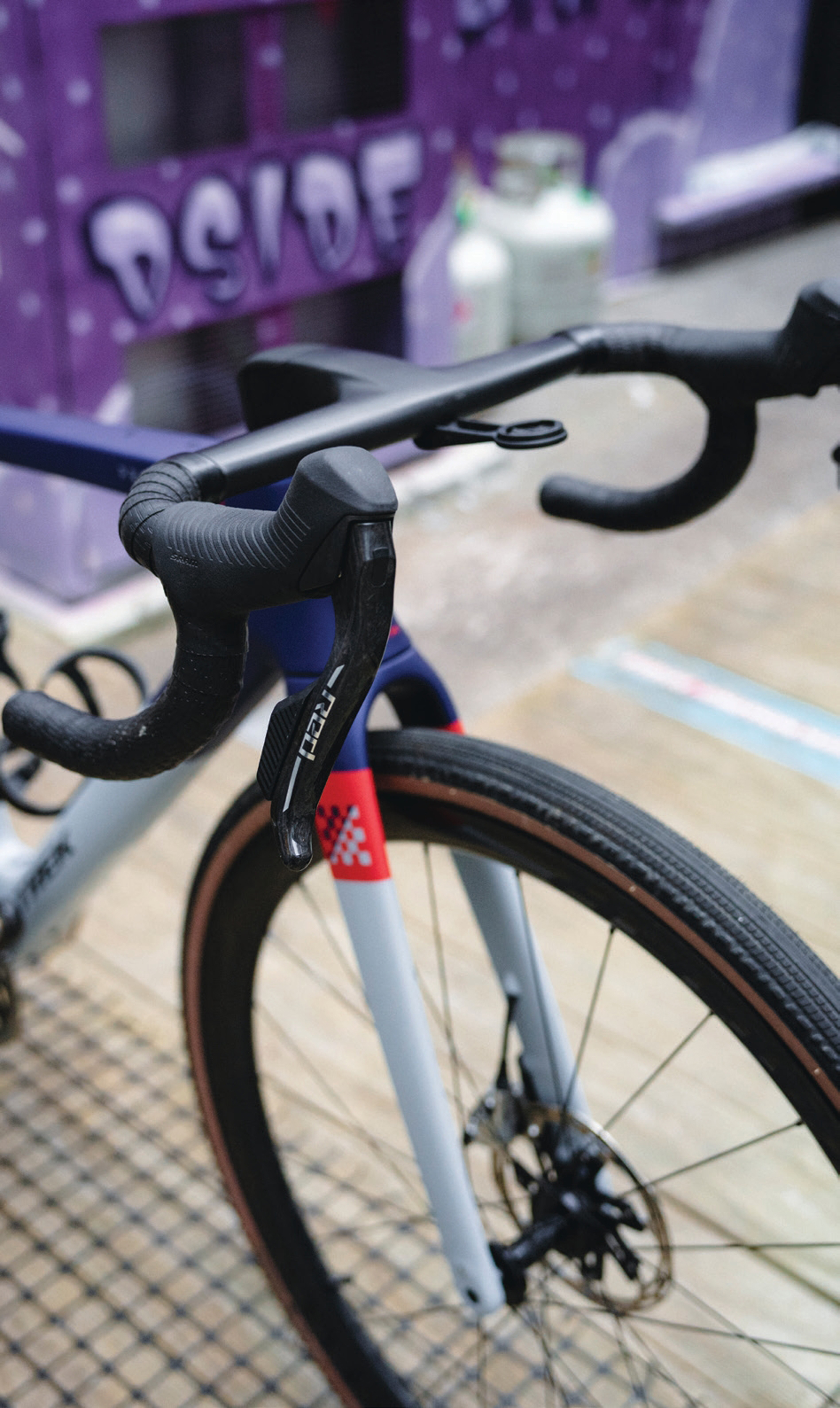
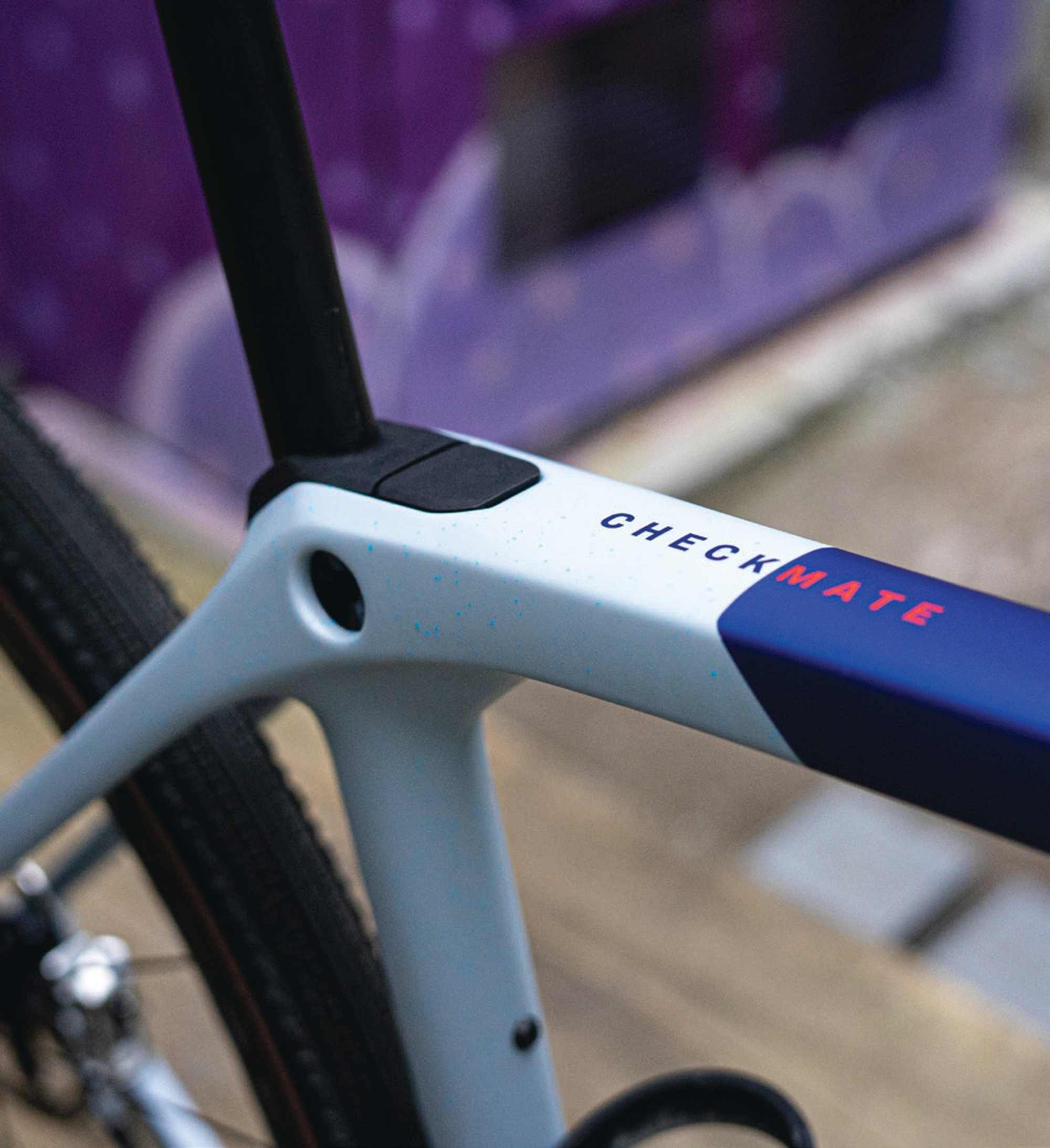
The Checkmate is stocked with 38mm Bontrager Girona tyres but can fit up to 45mm tyres for tougher terrain. The tyres are wrapped onto Bontrager Aeolus RSL 37V wheels. I was somewhat surprised to see a narrower tyre than we would normally see on most current gravel bikes (40mm+) especially for NZ’s harder gravel roads. However, I believe the thinking behind the smaller tyre would be in getting the most efficient, lightweight, aero tyres for racing.
The frame has mounts for top tube and frame tube bags, a UDH, and threaded T47 bottom bracket. The Checkmate is compatible with 2x drivetrain but cannot be fitted with mechanical shifting – which is perhaps signalling an end to mechanical shifting within a gravel racing environment? The Checkmate is also tuned for faster handling with shorter chainstays and wheelbase. The Checkmate uses Trek’s compliance-enhancing IsoSpeed seat tube which is designed around an aero-tuned D-shaped post (offered in 5mm and 20mm offsets). However, it’s not possible to fit a dropper into the Checkmate.
The recently launched SRAM Red XPLR 1×13 speed, 10-46t cassette and 42t chainring with a power meter groupset is used. This new groupset can be employed due to the frame being UDH (universal derailleur hanger) compatible. The Red XPLR AXS groupset is an excellent piece of work, and super appropriate for a fast-feeling gravel bike. Of course, you shouldn’t expect anything less for a top-shelf groupset, but shifting is swift and crisp across the 10-46t cassette – which has a great range – braking is powerful and highly controllable, the lever and hood ergonomics sound.
I spent a few months aboard the Trek Checkmate, managing short, mid and longer rides throughout that time. The shorter riders were around an hour or two, mid-length was around three to four hours, and long was anything over five hours. The first thing I noticed when I started riding the Checkmate, is that it is supremely efficient. It feels like your power is never wasted – this was particularly evident on bitumen.
Most of my local gravel rides start on tarmac, and even larger gravel rides nearly always feature a sealed section between gravel roads – the Checkmate definitely felt more ‘road like’ than ‘gravel like’. The zippiness on sealed roads are a clear standout. As for climbing on tarmac, it was no slouch and did a good job both in and out of the saddle. When generating speed across flat sealed roads it wasn’t a road bike, but wasn’t far off. It carries speed incredibly well, and when there’s a small incline or false flat, the Checkmate is quick to accelerate over them. The low and aggressive riding position and stiff front end helps transfer your power; it’s these transfer sections that feel sluggish on some gravel bikes, but aboard the Checkmate it was sprightly.
Onto gravel roads. Firstly, let’s address the rear-end compliance with the utilisation of the IsoSpeed system. This is very compliant indeed. It meant I could stay seated on loose steep gravel, allowing for a smooth power transfer. On some of these sections, on other bikes, I would have stood, dropped more gears, or crept forward in my saddle, but this wasn’t the case on the Checkmate. I think the IsoSpeed, matched with better gearing ratios from SRAM’s new Red XPLR groupset, makes for this superb efficiency. However, whilst the rear is compliant the front end isn’t. As mentioned earlier, it’s got a low stack, aero cockpit, and is stiff – which it needs to be being a race bike. That stiffness, however, means less compliance, making it a little harsh through potholes or any divots on gravelled roads. The one-piece handlebar cockpit – whilst super aero – doesn’t help with up- front compliance, especially on harsher terrain. I thought a wider tyre would be better, and it was helped somewhat when I fitted larger 42mm tyres, rather than the stocked 38mm. These were the same Bontrager Girona RSL tyres, with lower pressure, which made for a smoother ride, and if it were my personal bike, I would run 42’s or 45’s – which is the max tyre width within the Checkmate frameset.
On these rolling, unrelenting roads there’s plenty of climbs – from short to semi-long – and whilst modern gravel bikes haven’t always been the lightest, the Checkmate has been kept on a strict diet. Its overall weight is 7.55kg for size ML. As for the climbs – on road and gravel – the lighter frame was welcomed and kicked over shorter ascents well. There’s no surplus body fat on this race rig and even if you throw on your gravel race bike paraphernalia it’s certainly not going to weigh you down. I liked the lower weight as it felt sprightly, nimble and attacked well.
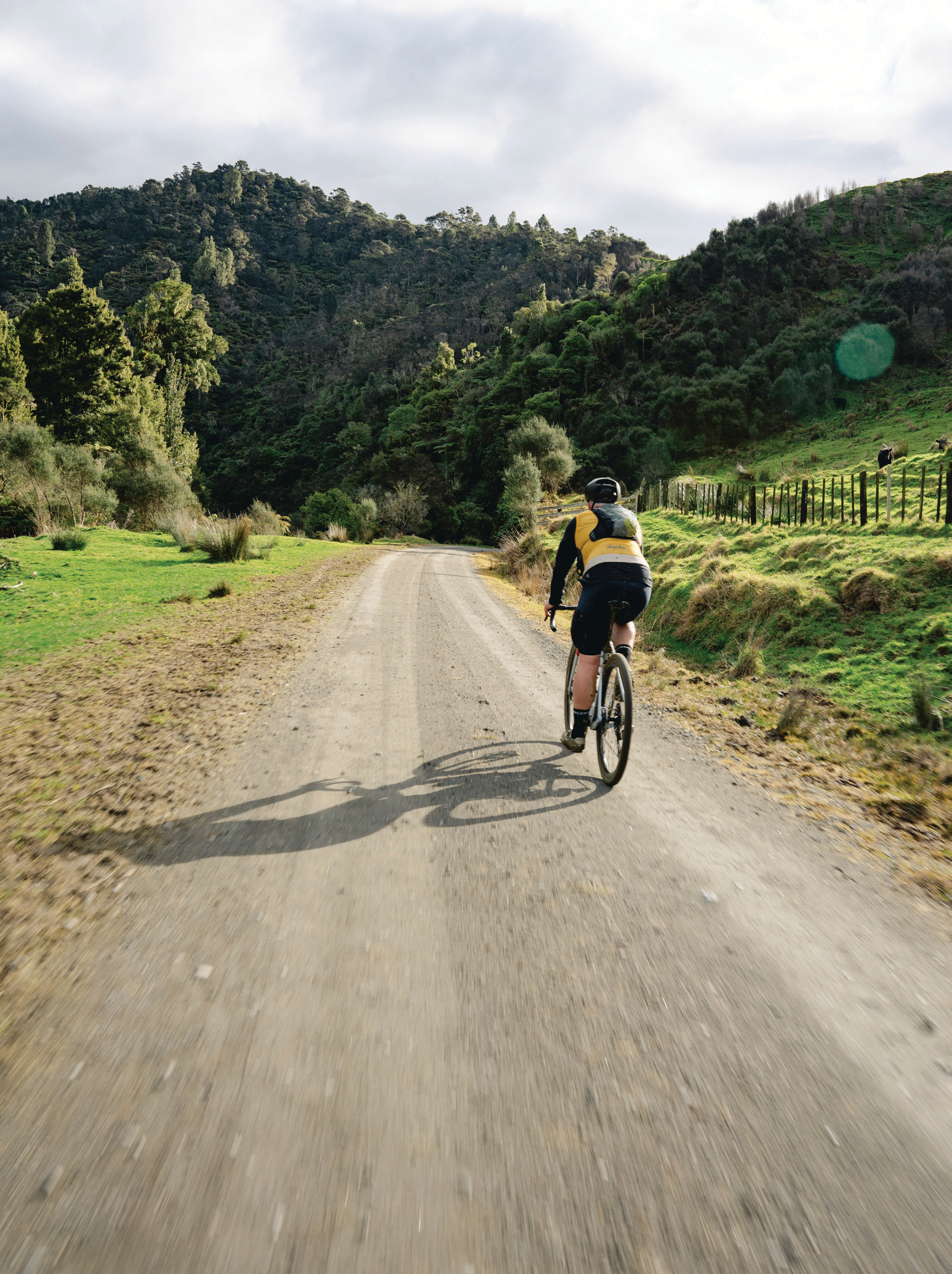
One of the long rides in Taranaki’s backcountry consisted of road, gravel, 4WD ruts, and track. It was winter and that meant for muddy conditions. The Checkmate handled most of what was thrown in front of it well, considering some of the sections are on the edge of the bike’s capabilities but what a rider could possibly expect with an all-day gravel race. The Checkmate handled well with good balance, snappiness, liveliness and stability. So, it’s not super planted but this isn’t the bikes intention – the shorter wheelbase makes that evident. The handling perhaps swings more towards the road rather than the rowdy off-road, but this is also intentional given its race focus. With the front end being a bit lower, it was more difficult to navigate the bike on some of the rowdier descents. The flip side is that, on flats, hills and rolling terrain – both sealed and non-sealed – it rolled with ease and speed. On the rowdier sections of this ride, the bike did feel a little under-gunned with a bit of a jittery feeling. On some of these sections I could have done with more flare on the handlebar just to get into a better position. On that note, the more aero position is aggressive and makes for a swift ride, however, it does make it a little harder for more technical sections. But, like I said earlier, this harsher terrain isn’t what the bike was intended for. Still, I wanted to test the bike’s capabilities. It does corner very well and there’s reactive handling. The ride was rather undulating and the Checkmate’s ability to climb very well and change pace in an instant was welcomed.
After several hours in the saddle, it was still relatively comfortable. I rode for over six hours on this day, and my only discomfort was a pinch between the shoulder blades towards the end and sore hands on longer descents due to the aero position.I could have ridden for longer and was quite happy aboard the Checkmate for multiple hours which is what an all-day gravel race would be. Since that ride, I have done several mid to long rides and found the comfort and compliance good – especially in the rear end.
I have been impressed with the Checkmate over the test period. Make no mistake this bike is made for purebred racing. To back up this statement, I tested the bike on a shorter ride against my Canyon Grizl – the same exact loop with gravel sections, paths, false flats and road sections. I rode the same loop 3kmph faster, for a similar power output, aboard the Checkmate. I should note, the tyres are a bit narrower on the Checkmate (38mm) vs Grizl (45mm). The Checkmate is flat-out fast and that was clear with this ride. And, in rides since then, the pedal seems to want to drop to the floor whenever I’m aboard this race rig. I think being in an aggressive position, and the prompt way it generates speed, just makes you want to ride at a high tempo.
I should note that the price tag isn’t for the faint- hearted. However, there is a lower spec model – Checkmate SLR 7 – which knocks $7k off the price. All-out speed comes at a very high price, and the Trek Checkmate SLR is no exception. The frame, parts and components are undoubtedly top-tier and premium grade, which contributes to the hefty price tag. But, without a doubt, it’s one of the highest priced production gravel bikes we’ve tested to date. The performance of this bike justifies the investment for serious racers and enthusiasts, and it proves itself as an exceptionally fast and versatile road – and gravel – racing bike, offering remarkable efficiency across various terrains. Its ability to ride well on road, and excel in champagne gravel scenarios, with minimal compromises, sets a new standard in the race-oriented gravel bike category. For those seeking the absolute pinnacle of gravel racing performance, who are willing to make the financial commitment, the Trek Checkmate SLR delivers a compelling blend of speed, aerodynamics and versatility.
The Checkmate makes its intentions clear – it’s made for racing. And with gravel racing only getting faster, the use of aerodynamics is now a large part of the equation. This new race bike incorporates aero and light weight with the best of road, to make an all-out gravel race weapon. It rides and feels like a thoroughbred, and sees a move into the new realm of gravel where the demand for speed is higher than ever.
